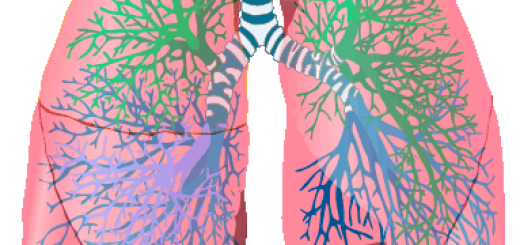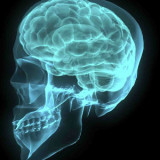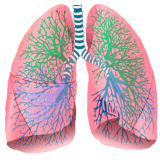“The human brain has 100 billion neurons, each neuron connected to 10 thousand other neurons. Sitting on your shoulders is the most complicated object in the known universe.” ~ Michio Kaku
When we were young, our parents made us brush our teeth. But it wasn’t until we understood cavities, fillings, and the cost associated with dental work that the toothbrush was seen as a tool rather than a burden.
Understanding provides the prologue to our actions. Mindfulness and meditation can be practiced in a mindless way. The true value of mindfulness practice is realized when we understand the mechanism as well as the method.
In this article I will attempt to provide a rudimentary explanation of the scientific basis for mindfulness practice.
I am a fourth year medical student specializing in psychiatry. The psychiatric and neurologic information I provide in this article will be oversimplified at times and overgeneralized at other times. The medical professional must forgive these indiscretions because the true complexity of the brain renders it a poor tool for self-understanding.
In reality, the brain is a highly complex and redundant circuit. There is not a one-to-one relationship between anatomical focus and function. It is more accurate to say that many anatomical locations are involved in any single function. For the sake of our discussion, a simplistic model will suffice. For those interested in reading a more complete description of the brain, I have included a reference list at the end of the post.
We must understand some basic details about how the brain functions to understand how mindfulness exercises work. We will use the metaphor of a car to unite the following discussion.
Modified from original by By Patrick J. Lynch, medical illustrator (Patrick J. Lynch, medical illustrator) [CC BY 2.5], via Wikimedia Commons
The neocortex/driver (neocortex means “new bark or rind”) is the most evolutionarily recent part of the brain. The neocortex/driver has many roles, but one of the most important is that of the Decision-Maker.
The neocortex/driver is made up of four lobes, not unlike the driver’s four limbs: the frontal lobe (Decision-Maker), parietal lobe (Sensation-Experiencer), temporal lobe (Listener, Linguist, and Memory-Maker), and occipital lobe (Seer). For our purposes we will primarily focus on the frontal lobe (Decision-Maker).
Modified from original By Mysid [Public domain], via Wikimedia Commons
Next is the thalamus, the relay (dashboard) of the brain. It is responsible for relaying sensory and emotional information to the neocortex/driver and its four lobes.
Directly adjacent to the thalamus/relay we find the limbic system/steering wheel. Like most modern steering wheels, the limbic system/steering wheel contains many components:
- The hypothalamus is akin to the cruise control button in our limbic system/steering wheel, regulating the “speed” of our heartbeat, breathing, as well as many metabolic functions.
- The amygdala provides the raw emotional content to our memories. For this reason we will refer to the amygdala as the “emoter.” The amygdala is capable of encoding implicit memories that are unavailable to conscious awareness. An implicit memory is different than an explicit memory in that we do not need to consciously access it to experience it. Remembering where your shoes are is an explicit memory, while knowing how to tie your shoes is an implicit memory.
Implicit memory is very influential on our moods because of its subconscious nature and its close relationship to the emotional amygdala/emoter. Implicit memories are steeped in emotional flavor and we experience rather than remember them.
The limbic system is much more complex and contains many more components than this brief outline, but for our purposes this will suffice.
We must add one more layer to this metaphor before we can use it as a proper model for the brain. Our body contains two competing systems: the sympathetic nervous system and parasympathetic nervous system. Using our car metaphor, let’s call our sympathetic nervous system (SNS) the gas and our parasympathetic nervous system (PSNS) the brake. The hypothalamus/cruise control regulates the activation or deactivation of these two competing systems (there are actually many more influences over these systems but for simplicity’s sake this explanation will suffice).
The SNS/gas evolved as the fight-or-flight system. When confronted with a saber tooth tiger, our ancestor’s hypothalamus/cruise control would trigger the SNS/gas to increase his heart rate, respiratory rate, and blood pressure to prepare for a fight or to run (those who chose the latter likely passed on their genes while the former provided a caveman-cutlet for the lucky saber tooth).
After the SNS/gas propelled our ancestors to the safety of their respective caves, the PSNS/brake was activated. The PSNS/brake is also known as the rest-and-digest system because it functions in direct opposition to the SNS/gas, decreasing heart rate and respiratory rate while increasing digestion.
Phew!
Now that we have built our brain/car let’s take it for a spin.
Imagine a scenario that produces anxiety. Let’s recycle the dental analogy from our introduction.
Let’s imagine that as a young child you had a cavity filled with an inadequate amount of Novocain. The insufficient numbing caused you to experience a profound pain. Perhaps you don’t have an explicit memory of that day but you had better believe that your amygdala/emoter has encoded a powerful implicit memory (children less than 5 years old are generally less able to create reliable explicit memories but are very capable of forming implicit memories).
Your amygdala/emoter associated the dental office with a painful stimulus, and as such every time you walk into a dental office with the sound of drills and scraping, your palms sweat and your heart races.
We will examine the road that leads from the sound of a dental drill to sweaty palms and a racing heart more closely.
The sound of the drill enters our ear and is transformed into an electrical impulse, making its way to the thalamus/relay. From here we divide into the Mindless and Mindful circuit.
First, let’s examine the Mindless circuit. From the thalamus/relay electrical impulses travel to the amygdala/emoter and then are routed directly to the hypothalamus/cruise control. The hypothalamus/cruise control presses the SNS/gas to increase our heart and respiratory rate.
At the same time as electrical impulses are traveling along the Mindless circuit a separate stream is traversing the Mindful circuit.
The Mindful circuit proceeds as follows: the sound of the dental drill enters our ears and arrives at the thalamus/relay just as before. However, instead of shooting off to the amygdala/emoter it travels to the temporal lobe/Listener who in turn hands it off to the frontal lobe/Decision-Maker to analyze. It takes approximately 200 milliseconds (about the time it takes to blink) for the Mindless circuit to make our hearts race and palms sweat while the Mindful circuit takes at least 10 times as long to bring the identity of the sound as a dental drill to our conscious awareness.
This is a relatively straightforward example. However, in the real world this series of events does not transpire in such a linear pattern.
More typically, we miss the original trigger of our emotional reaction, either because it is too subtle or it exists only in our subconscious.
Continuing with our example of a dental phobia, let’s imagine that we are walking by a construction site and hear the sound of a drill. Maybe the sound is perceived subconsciously because we are distracted, attending to the busy sidewalk. Within the next ten steps our heart is racing, we feel sick to our stomach, and our palms are covered in sweat. Because our frontal lobe/Decision-Maker was aiming the spotlight of awareness at the busy sidewalk, it doesn’t attend to the signals from our temporal lobe/Listener. Essentially, we do not complete the Mindful circuit. And, having missed the original stimulus, we are left without a clue as to why we suddenly feel so awful.
The Mindless circuit is always “on” while the Mindful circuit requires the attention of the frontal lobe/Decision-Maker to be complete. Thus, our Mindless circuit makes our heart pound, but the distracted Mindful circuit misses the cause.
By the time our thalamus/relay gets the feedback from our body about our racing heart and informs our neocortex/driver, we have completely missed the association between the unrecognized sound of a drill and our dental phobia. And without this deeper understanding, we are confused and left with an unexplainable and thus insurmountable anxious state.
Cue: mindfulness.
Mindfulness practice opens the hood on these processes. We gain not only insight, but also mastery of our body and mind.
When we sit mindfully and meditate on our breath, our breathing slows and we take deeper, longer breaths. These deep breaths engage our vagus nerve. The vagus nerve activates our PSNS/brake, slowing our heart rate and lowering our blood pressure.
We can use this mechanism outside of our meditation to slow our heart rate when we are anxious. And if we slow our heart rate, our neocortex/driver receives the message via the thalamus/relay that the anxious situation is going away (even if it isn’t!).
Additionally, when we regularly sit mindfully, we gain insight into the inner workings of our bodies. We become more aware of our heartbeat, our breathing patterns, and the sensations of our visceral organs (guts). All of these sensations are under the direct control of the hypothalamus/cruise control, SNS/gas, and PSNS/brake.
The final piece of the puzzle involves the relationship between the amygdala/emoter and the frontal lobe/Decision-Maker. The frontal lobe/Decision-Maker can essentially tell the amygdala/emoter to “chill out” if the external stimulus doesn’t warrant the reaction it was given.
This insight is key to gaining control of an unexplained anxious state.
Let’s revisit the example of the subconsciously heard construction site drill; but this time, let’s be mindful. First, we subconsciously hear the worker’s drill and our amygdala/emoter-hypothalamus/cruise control team triggers our SNS/gas to increase our heart rate. It is at this point that we flex our mindful muscle.
Mindfulness provides mastery of the anxious state in two ways. First, mindfulness helps us become more inquisitive about our information-rich bodily states.
Second, our frontal lobe/Decision-Maker can flex its power over the amygdala/emoter with the information provided by our mindful self-inquiry. The amygdala/emoter may react to the innocuous sound of a construction site drill in a Mindless manner, but our frontal lobe/Decision-Maker can soothe its alarm by way of feedback control.
Mindfulness practice offers us a way to understand and regain mastery of our body and mind. The benefits are subtle at first but continued practice reveals a profound shift in the way we interact with our internal and external environment.
In fact, studies have demonstrated that regular meditation increases the physical size of a part of the frontal lobe/Decision-Maker that is responsible for self-perception.
I hope that my analogy has helped the reader to understand the basic mechanisms of our minds. For it is through understanding that we develop acceptance. And with acceptance we find joy.
REFERENCES
Eagleman, David. Incognito: The Secret Lives of the Brain. New York: Pantheon, 2011. Print.
Gelb, Douglas James. Introduction to Clinical Neurology. New York: Oxford UP, 2011. Print.
Hanson, Rick, and Richard Mendius. Buddha’s Brain: The Practical Neuroscience of Happiness, Love & Wisdom. Oakland, CA: New Harbinger Publications, 2009. Print.
Siegel, Daniel J. Mindsight: The New Science of Personal Transformation. New York: Bantam, 2010. Print.



![MRI by Nevit Dilmen / [CC-BY-SA-3.0 or GFDL]](/wp-content/uploads/2014/07/brain-color-e1406157479540-160x160.jpg)






Excellent article Matthew!
Thanks so much Jay! I appreciate your support, look for more articles like this in the near future. Thanks again!
Just found your site online on a really dark day. Just wanted to say THANK you!!!!!!! It has helped me tremendously!
Thanks Lilly! I’m so glad that you enjoyed this article and how wonderful that the timing was serendipitous. Thanks for the support!
Beautfully articulated! I love that you posted the graphics of the simplfied ‘map’ of the brain. The analogy helped bring simplicity to something esoteric and complex. Thank you <3
<3
Thank you! I really appreciate you reading the article and providing feedback. You hit the nail on the head; these topics are immensely complex and could (and do) fill many textbooks with the details. My approach to this article was to try to distill the information down so that it was easily understandable and useful for the reader. Thanks again!
~ Matthew
Nice post. Well written and easy to understand for an armchair scientist and meditator curious about the biology underneath. Thanks for sharing.
Thanks George, I’m so glad that you enjoyed this post! All of my posts are geared towards the armchair scientists because this material should be accessible to all. I appreciate your support!
This has inspired me to do my project this quarter on the neuroscience of different emotional states in the moment. Mucho gracias.
Max,
Thank you for reading and I’m so glad that the article resonated with you!
excellent article.
I hope you do not mind this new interpretation of anxiety and mindfulness that is ironically not new at all. It’s basis is on neuroscience as well, but stresses on neurologically informed learning theory, which differs in emphasis from your mainly neurological argument. (and no, the vagus nerve has nothing to do with it!)
As you know, mindfulness, or present moment or ‘choice less’ awareness is associated with a radical reduction in somatic arousal, or a state or relaxation or resting. The logical inference follows that having a lifestyle full of choices is associated with a state of tension or anxiety. The problem is that such stressful reactions are commonly attributed to ‘demand’ or ‘threat’, not choice.
The only model in psychology that links choice to tension and anxiety is the Dollard and Miller theory of anxiety posited in the 1950’s. This theory, which is still influential in psychology today, posits that tension and anxiety occur as learnable ‘drives’ that speed avoidance from perseverative and insoluble choice conflicts as represented by rumination and worry. It follows that eliminate choice conflict and a state of relaxation will occur. That prediction predates mindfulness and anchors the defining element of mindfulness firmly to learning theory.
The ‘drive’ model that Dollard and Miller used was influenced by the psychodynamic theory of Freud, but drive concepts are largely discounted today in modern bio-behavioral learning theory. The question is whether present day neurally informed models of incentive motivation would make the same predictions that in effect not only confirm the efficacy of mindfulness, but explain it.
The answer I believe is yes. Below is a link to a small book written in two parts for lay and academic audiences that explains mindfulness simply as well as provides a contrarian interpretation of stress. The newly revised book (the lay part takes about twenty minutes to read) is highly influenced by the work of the distinguished neuro-psychologist Kent Berridge of the University of Michigan, who was kind to vet the book for error and endorse the resulting work.
You may find it worthy of comment, but it is certainly I hope worthy of criticism and test, and that above all is the point of science.
https://www.scribd.com/doc/284056765/The-Book-of-Rest-The-Odd-Psychology-of-Doing-Nothing
Regards,
Art Marr
Very interesting Art! Thanks for reading and I appreciate the discussion! What an interesting historical perspective. I’ll have to check out the book, thanks again for taking the time to comment.
Thanks for the informative site Matthew, I love that you use analogies, I find that very helpful.
Thanks Gillian! I’m so glad you found the article helpful!